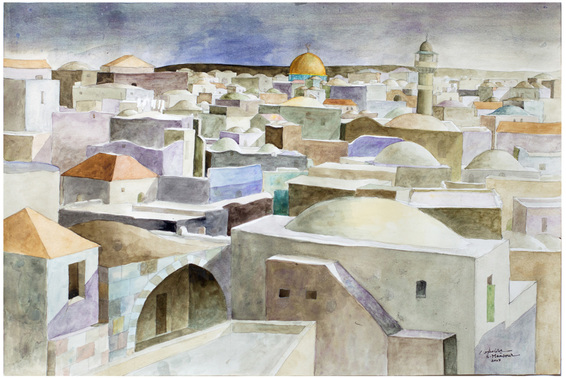
R
E
V N
E
X
T
Alternative Art Fairs Seek to Revive Art Scenes
Screenshot of Galerie Lelong & Co. (New York / Paris)’s online viewing room at South South Veza, 2021. Image by Pamela Wong for ArtAsiaPacific.
Amid the many ongoing challenges posed by the Covid-19 pandemic, including its forced cancellation of mega art fairs, commercial galleries and various art groups are attempting to rejuvenate the art community via alternative fairs.
Liza Essers, owner of Cape Town’s Goodman Gallery, launched the online platform South South to showcase artists and galleries from the Global South. The first edition, dubbed South South Veza (2/24–3/7), presented 50 galleries from 30 countries, and also featured a series of livestreamed talks as well as a fundrasing auction with proceeds going towards three nonprofit partners: Raw Material Company (Dakar), Green Papaya Art Projects (Manila), and Casa do Povo (São Paulo). The website, with its clean design, separated gallery presentations into “Main” and “Solo” sections, showing up to 12 works from different artists or six works from a single, emerging artist, respectively. While exhibitors reported positive experiences, sale results were mixed.
Speaking to ArtAsiaPacific, Mary Sabbatino, partner of Galerie Lelong & Co. (New York / Paris) and South South collaborator, emphasized the time and effort invested to build the platform, adding that “sales are not the primary objective of the platform, but awareness, education and community.” The gallery showed Lin Tianmiao’s 2012 mixed media installation, an untitled bonsai tree priced at USD 125,000, and Nalini Malani’s Examination Table I (2013), a reverse-painted acrylic on Hahnemuhle bamboo paper, which was priced at USD 12,000.
Blum & Poe (Los Angeles / New York / Tokyo) placed heavily impasto paintings by Chinese artist Zhu Jinshi with collectors in the United States, Japan, and Hong Kong, including Thunder Resounds Through the Palace (2020) at undisclosed prices. Taka Ishii (Tokyo / Hong Kong) sold one painting among their presentation of works by Mario García Torres and Silke Otto-Knapp. Jhaveri Contemporary (Mumbai) reported sales of Vasantha Yogananthan’s c-print photographs to young collectors from India, Singapore, and London, priced at EUR 3,500–4,500 (USD 4,150–5,330) each.
Singapore’s STPI told AAP that the platform “casts a long overdue spotlight on the art and ecology of the Global South,” while future editions might “benefit from more engagement features to boost further sharing on social media.” The gallery brought Shambhavi Singh’s sulphurtint and lithography, each at SGD 6,000–20,000 (USD 4,440–14,810), in addition to the late Hema Upadhyay’s Universe Revolves On (2008) series of mixed media assemblage priced at SGD 40,000–65,000 (USD 29,620–48,130) each. TKG+ (Taipei) also reported no sales, but said that it enjoyed the “younger and more energetic platform.” The gallery’s virtual booth included new oil paintings by Chen Ching-Yuan and Sawangwongse Yawnghwe. Seoul’s Whistle Gallery found the new platform exciting, especially “with regards to its archival purposes and its ongoing mission to act as a year-round resource for art in the Global South.” Its solo booth featured acrylic and oil on canvases by multimedia artist Min ha Park, priced at USD 5,000–12,000 each.
In Palestine, the Ramallah-based Zawyeh Gallery, which also has a Dubai branch, launched its own art fair, that ran from December 14, 2020, until March 4. Titled Ramallah Art Fair, the inaugural single-gallery event featured more than 100 works by 26 Palestinian artists, at the gallery. Propelled by a desire to help the local art scene, which has been negatively impacted by the Covid-19 pandemic, gallery director Yousef Hussein sought to “support young and established Palestinian artists,” but also to “survive as a gallery during these challenging times,” according to Artnet News.
Although the city was under strict social distancing restrictions, the show was well received. Combined with digital promotions such as spotlighting various artists on the gallery’s Facebook page, a third of the works were already sold half way through the show’s exhibition dates, to Palestine and international collectors.
The fair was devised to be affordable: majority of the works presented were priced under USD 1,000, while a few, by established artists like Nabil Anani and Sliman Mansour—who showed wooden sculptures and paintings of Old Jerusalem, respectively—carried higher prices, but did not exceed USD 5,000. Other highlights included Khaled Hourani’s landscape paintings featuring Israeli military fortresses, Asma Ghanem’s colorful portraits that examine the Black Lives Matter movement, and Ola Zaitoun’s Quarantine (2020) painting series of quotidian things, created during the lockdown. Like South South Veza, albeit on a much smaller scale, Ramallah Art Fair offered online audiences an opportunity to connect around art, while also supporting artists and galleries as the world struggles to emerge from the grips of the pandemic.
Pamela Wong is ArtAsiaPacific’s assistant editor; Lauren Long is news and web editor.
To read more of ArtAsiaPacific’s articles, visit our Digital Library.












